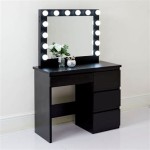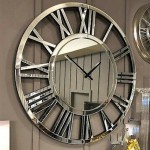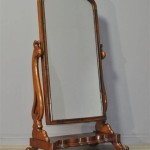Mirroring Your TV Screen on a Tablet: A Comprehensive Guide
The capability to mirror a television screen onto a tablet device offers a flexible and convenient viewing experience. This technology allows users to extend their entertainment beyond the confines of the living room and access content on a portable display. Whether for watching movies, playing video games, delivering presentations, or accessing applications, screen mirroring provides a versatile solution for various needs. Understanding the technologies involved, the necessary equipment, and the potential limitations is crucial for a successful implementation.
Screen mirroring, in essence, is the process of replicating the display of one device, such as a television, onto another device, such as a tablet, in real-time. This can be achieved through various methods, including wired connections and wireless protocols. The chosen method often dictates the quality of the mirrored image, the latency (delay between the original and mirrored display), and the overall user experience. Wireless solutions are generally favored for their convenience, while wired connections often provide a more stable and higher-quality stream.
This article examines the different methods for mirroring a television screen onto a tablet, discusses the compatibility considerations, and explores troubleshooting strategies to address common issues that may arise during the setup and operation of a mirrored display.
Understanding Wireless Screen Mirroring Technologies
Several wireless technologies facilitate screen mirroring between a television and a tablet. These technologies differ in their technical specifications, compatibility across devices, and performance characteristics. Understanding the unique capabilities of each protocol is crucial for selecting the appropriate solution for a specific set of requirements.
One of the most prevalent wireless screen mirroring technologies is Miracast. Miracast is a peer-to-peer wireless screencast standard developed by the Wi-Fi Alliance. It enables devices to connect directly to each other without requiring an intermediary Wi-Fi network. The technology utilizes Wi-Fi Direct, a standard that allows wireless devices to establish a direct Wi-Fi connection. This allows for the transmission of audio and video data between the source device (television) and the receiving device (tablet) without needing to route the signal through a wireless router.
Miracast's primary advantage is its widespread compatibility. It is supported by a large number of devices across various operating systems, including Android, Windows, and some Linux distributions. The protocol supports resolutions up to 1080p and can handle audio streaming. However, its performance can be affected by interference from other wireless devices operating on the same frequency band. The range is also somewhat limited compared to traditional Wi-Fi networks.
Another common technology is Apple's AirPlay. AirPlay is a proprietary wireless communication protocol developed by Apple Inc. It allows users to stream audio and video content from Apple devices (such as iPhones, iPads, and Macs) to compatible receivers, including Apple TVs and AirPlay-enabled televisions. Unlike Miracast, AirPlay typically requires a Wi-Fi network to function. However, some newer implementations support peer-to-peer AirPlay, which enables direct connections between devices without a network.
AirPlay offers several advantages for users within the Apple ecosystem. It provides seamless integration with Apple devices and supports high-quality audio and video streaming, including 4K resolution. The protocol also offers advanced features such as multi-room audio and video playback. However, AirPlay is primarily limited to Apple products and devices that are specifically licensed to support the technology. It is generally not compatible with Android or Windows devices without the use of third-party applications or workarounds.
Chromecast is a streaming media adapter developed by Google. It plugs into the HDMI port of a television and allows users to stream content from various devices, including tablets, smartphones, and computers. Chromecast utilizes the Google Cast protocol, which enables devices to discover and connect to the Chromecast device over a Wi-Fi network. Unlike Miracast, Chromecast does not directly mirror the entire screen of the source device. Instead, it allows users to "cast" specific applications or content to the television.
Chromecast offers a broad range of compatibility across various platforms, including Android, iOS, Windows, and macOS. It supports a wide variety of streaming services, including YouTube, Netflix, Hulu, and Spotify. The device also supports high-resolution video streaming, including 4K resolution. A key advantage of Chromecast is its ability to operate independently of the source device once the streaming session has been initiated. This allows users to use their tablet for other tasks without interrupting the playback on the television.
DLNA (Digital Living Network Alliance) is a set of standards that enable devices on a home network to share digital media content with each other. DLNA is not specifically designed for screen mirroring but can be used to stream media content from a television to a tablet. DLNA requires both the television and the tablet to support the DLNA protocol and be connected to the same network. Using DLNA, you can browse media stored on the television from the tablet and initiate playback. DLNA is a more general media sharing protocol than dedicated screen mirroring technologies.
Evaluating Wired Connection Options
While wireless screen mirroring offers convenience, wired connections can provide a more stable and potentially higher-quality mirroring experience. These options typically involve physically connecting the tablet to the television using cables and adapters. The specific type of connection required will depend on the ports available on both devices.
HDMI (High-Definition Multimedia Interface) is a common interface for transmitting both audio and video signals between devices. Many televisions and tablets feature HDMI ports. To mirror the television screen on a tablet using HDMI, the tablet must have an HDMI output port. If the tablet lacks a standard HDMI port, an adapter may be required. For example, some tablets use a USB-C port that can be adapted to an HDMI output. The video and audio quality of mirroring using HDMI is generally excellent as the signal is transmitted digitally with minimal loss.
MHL (Mobile High-Definition Link) is a technology that allows users to connect mobile devices, such as tablets, to televisions using a single cable. MHL combines video and audio signals into a single interface. The MHL standard has evolved over time, with newer versions supporting higher resolutions and additional features. To use MHL, both the television and the tablet must support the MHL standard. If the tablet uses a USB-C port, a USB-C to MHL adapter may be required. While offering a cleaner connection with a single cable, MHL is less common than HDMI.
USB-C connections are becoming increasingly prevalent on modern tablets and offer a versatile solution for screen mirroring. Many USB-C ports support DisplayPort Alternate Mode (DP Alt Mode), which allows the port to output video signals. With a USB-C to HDMI adapter, tablets with DP Alt Mode can easily connect to televisions that have HDMI inputs. This solution provides a high-quality video and audio experience and is often the preferred method for wired screen mirroring with newer tablets.
Before pursuing a wired connection, verifying the compatibility of ports and required adapters between the tablet and the television is essential. Not all USB-C ports support video output. Consulting the device's documentation or specifications is necessary. Confirming that the chosen cable and adapter support the desired resolution and refresh rate is also important for optimal image quality.
Troubleshooting Common Screen Mirroring Issues
Despite the advancements in screen mirroring technology, users may encounter issues during the setup or operation of the mirrored display. Addressing these issues often requires a systematic approach to identify the root cause and implement the appropriate solution.
One of the most common problems is the inability to establish a connection between the television and the tablet. When using wireless technologies such as Miracast or AirPlay, ensuring that both devices are within range of each other and that Wi-Fi is enabled (if required) is crucial. Interference from other wireless devices can also disrupt the connection. Attempting to move the devices closer together or reducing interference from other sources can resolve this issue. Another solution is to check the firewall settings on the tablet or network to ensure that the screen mirroring protocols are not being blocked.
Lag or latency, which is the delay between the original display and the mirrored display, can significantly impact the user experience, particularly when playing video games or using interactive applications. Reducing the distance between the devices, minimizing wireless interference, or switching to a wired connection can help mitigate latency issues. Ensuring that both devices have sufficient processing power and memory to handle the screen mirroring process is also essential. Closing unnecessary applications on both the tablet and the television can free up system resources and improve performance.
Another problem that may arise is issues with audio playback. If no sound is being transmitted to the television, verifying that the audio output settings on the tablet are configured correctly is necessary. Selecting the appropriate audio output device (e.g., HDMI or Bluetooth) may be required. For wireless connections, ensuring that the audio streaming protocol is compatible between the devices is also important. If still encountering problems, restarting both the tablet and the television can often resolve audio-related issues.
Image quality problems, such as pixelation, blurring, or incorrect resolution, can also occur during screen mirroring. Ensuring that both the tablet and the television support the desired resolution and refresh rate is crucial. Adjusting the display settings on both devices to optimize image quality can also improve the viewing experience. When using wireless connections, a strong and stable Wi-Fi signal is essential for maintaining high-quality video streaming. Switching to a wired connection can often resolve image quality issues caused by wireless interference or bandwidth limitations.
Firmware updates for both the television and the tablet can resolve compatibility issues and improve screen mirroring performance. Checking for and installing the latest firmware updates for both devices is recommended. Often, manufacturers release updates that address bugs and improve the functionality of screen mirroring features.
If all other troubleshooting steps fail, resetting both the tablet and the television to their factory default settings can resolve underlying software or configuration issues that may be preventing the screen mirroring from functioning correctly. However, backing up any important data before performing a factory reset is important, as this process will erase all data from the device. After the reset, reconfiguring the screen mirroring settings and testing the connection again is recommended.

6 Ultimate Ways To Screen Mirror Samsung Tablet Latest

How To Mirror Tablet Tv

Display Your Galaxy Tablet On A Tv With Smart View Samsung Ca

Updated How To Screen Mirror Samsung Tablet Tv

Mirroring A Tablet Screen To Tv Everything You Need Know

How To Screen Mirror Your Tv With Any Devices Astrogate

Updated How To Screen Mirror Samsung Tablet Tv
Screen Mirroring Cast To Tv Apps On Google Play

Galaxy Tab A How To Connect Screen Mirror Wirelessly Sony Smart Tv

How To Mirror Any Android Tablet Smart Tv Without Using App








